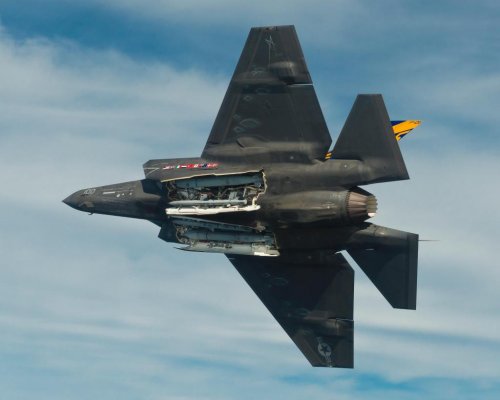"F-35 Fighter Jets To Get Mysterious New 'Cyberpod' Cyberweapon"
World’s deadliest podcast?
By Kelsey D. Atherton Posted March 19, 2015
Source:
http://www.popsci.com/f-35-cyberjoint-cyberstrike-cyberfighter-gets-cyberpod-cyberwarfare
World’s deadliest podcast?
By Kelsey D. Atherton Posted March 19, 2015
Source:
http://www.popsci.com/f-35-cyberjoint-cyberstrike-cyberfighter-gets-cyberpod-cyberwarfare
Lockheed Martin’s F-35 Joint Strike Fighter is, for better or worse, the future of American military airplanes. With Air Force, Navy, and Marine Corps versions costing over $100 million each, the aircraft is a jack-of-some-trades designed to replace 10 older models now in use by America and its allies. The F-35 has a lot of very different-sized shoes to fill, including one in a cyberwarfare, so it’s going to do something new: carry a "cyberpod" cyberweapon.
Like many new weapons systems, the cyberpod is cloaked in secrecy. Rear Admiral Randy Mahr, a program director on the F-35, told IHS Jane's that “industry is developing a pod that would not degrade the signature of the airplane.” Translation: The cyberpod is probably an external weapon that won't make the F-35 any less stealthy than it is now.
Cyber-attack is a broad category that encompasses everything from jamming signals to destroying laboratory equipment (i.e. centrifuges to refine weapons-grade nuclear materials) with malicious code. The common thread is that all cyber attacks target computers in some form or another.
We don't yet know what the F-35’s cyberpod will do. But in 2010 the U.S. Navy revealed a goal develop its existing cyberweapon technologies into a “Next Generation Jammer.” Made by Raytheon, the jammer fools hostile radar systems by receiving those signals, then sending back false ones directly to the source. Fast-forward five years, and it's almost certain the jammer has evolved--and that the cyberpod could do more than any jamming devices currently carried by naval aircraft. If not, what’s the cyberpoint?


